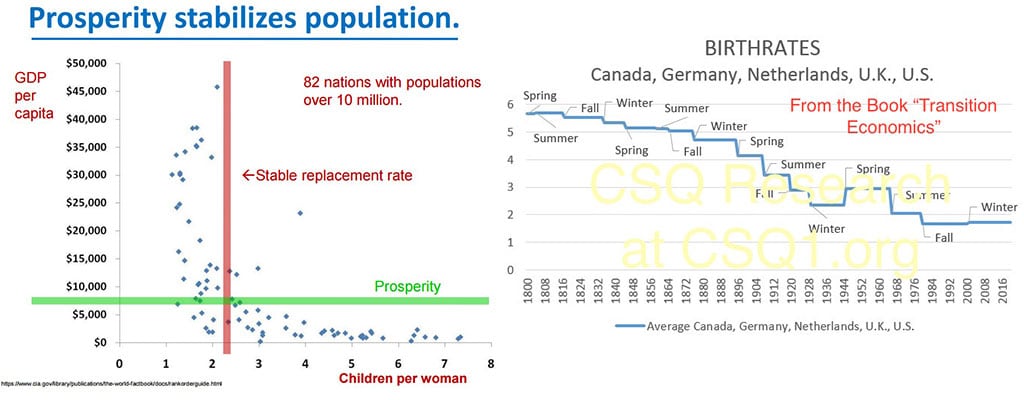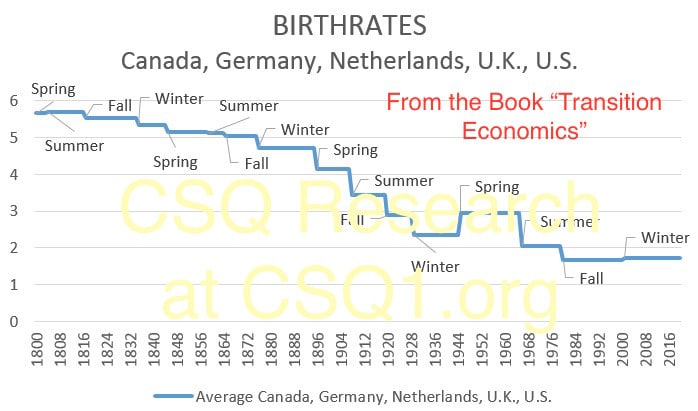- This topic has 0 replies, 1 voice, and was last updated 6 years ago by
etilley.
-
AuthorPosts
-
April 6, 2018 at 1:11 am #7643
etilley
KeymasterSustaining Populations
Sustaining Populations in human communities happens very reliably when economic opportunity and the things we need – like shelter, family, education, food, and security (see Social Contract) – exist comfortably in a society.
To prove this, think-tank CSQ Research researchers took birthrate records from Canada, Germany, Holland, Britain and the United States – from as far back as 1800, and averaged these per-family birthrates within LongWave, or Kondratiev K-Wave, economic seasons (see Transition Economics). We chose these countries because since 1945, these were prosperous countries.
During our most recent Spring season – which are times of economic ease and booms, average births per woman was three (between 1945 and 1965). This dropped to two children per woman during the summer season ending in 1984. From this point on, average children per women dropped to below-sustainable levels – between 1.7 and 1.8 through to today.
Before 1945, birthrates were higher on average in these countries due to lower levels of prosperity, but nevertheless, we always see that Spring birthrates are higher than Summer and recession and depression seasons in Autumn and Winter.
Avoiding Overcrowding
Look no further than economic austerity and poverty to explain large birthrates in poor countries the same. The above study of 82 countries with populations larger than 10-million, by the CIA Factbook, shows that impoverished communities have much higher birthrates – most likely due to high infant mortality and poor economic opportunities in their retirement years.
Overcrowding – is a relative thing too, the highest density, largest population on the planet is located on the island of Java in Indonesia, where 130 million peoples live on an island approximately 60% the size of Great Britain – productively.
Indonesia is #64 in Social Contract beside Portugal and Singapore; #64 in SCP between the U.S. (#54) and Pakistan (#69) or Brazil (#71).
Applying Java’s population density to the habitable areas of our earth leaves us with more room than we will overpopulate in 1,000 lifetimes. I enjoyed Dan Brown’s books quite a bit until I got to Inferno – and then realized there’s much ado about nothing here basically. The character Thanos is similarly misinformed in the Marvel comics series, and there are several other popular movies and books that misunderstand simple population management.
To sustain populations and avoid overcrowding our planet, we must simply ensure abundance, prosperity and social contract.
-
AuthorPosts
- You must be logged in to reply to this topic.



